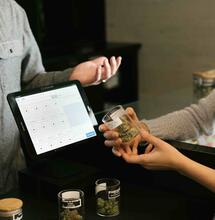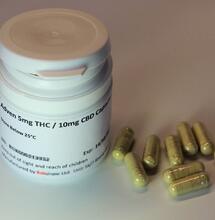Now We Make Them Ourselves

For an ambitious grower, there's nothing better than creating his own Cannabis seeds and plants. But how to obtain good quality seeds, and how to take care of them? A simple and safe method for producing strong, healthy seeds is to use two different homozygous plants as mother plants (a male and a female); in the example we have Skunk #1, Original Power Plant (100% Sativa) and Afghani (100% Indica).
For an ambitious grower, there's nothing better than creating his own Cannabis seeds and plants. But how to obtain good quality seeds, and how to take care of them? A simple and safe method for producing strong, healthy seeds is to use two different homozygous plants as mother plants (a male and a female); in the example we have Skunk #1, Original Power Plant (100% Sativa) and Afghani (100% Indica).
For an ambitious grower, there’s nothing better than creating his own seeds and plants. But how to obtain good quality seeds, and how to take care of them? A simple and safe method for producing strong, healthy seeds is to use two different homozygous plants as mother plants (a male and a female); in the example we have Skunk #1, Original Power Plant (100% Sativa) and Afghani (100% Indica).
| This male is only on day 17 of flowering. |
Ripe pollen sacs can split open at the lightest touch. The pollen is so fine as to be practically invisible. There are two different ways to collect male pollen. The first option is to attach a bag to the plant, taping it with adhesive tape to the stem shortly before the pollen sac opens. Then cut the plant right under the sac and shake the bag so as to free the pollen, which will deposit on the bottom. Afterwards, carefully transfer the pollen from the bag to a small container. To make things safer, you can dampen the bag before opening it with a squirt gun to make sure the pollen sticks to it. The second option is to cut the nearly ripe pollen sacs with a pair of scissors in order to collect the pollen in a small container. The best time to do this is when the sacs are about to open (because the pollen is already active enough to pollinate other plants). But the pollen sacs need to be kept under careful consideration, on a regular basis and several times a day. Then you must take a pinch of flour and mix it with the pollen. This gives growers the advantage of being able to better dose their pollen, as well as offering protection against dampness if the pollen isn’t needed right away. At this point, female flowers should be pollinated at the height of their flowering stage, to avoid the risk of an undesired pollination. With the aid of a small brush, apply the pollen with care; the tip of a paintbrush is enough for a flower with a diameter of about 2-3 cm.
You should always pollinate the lower stem, because seeds often take longer to mature compared to the rest of the flower. Be careful to collect the upper part at exactly the right moment, because if the pollen falls on the lower part, you risk an improper fertilization.
Once you’ve applied the pollen, cover the flower with a paper bag and leave it on for at least three days. All it does is protect the flower from air currents that could blow away the freshly-deposited pollen. That’s it; the rest is done by the plant itself. Now zealous growers can pollinate their plants at the height of their flowering stage. The pollen passes through the female flower’s two stigmas to reach its ovaries where, after having fertilised the ovules, it will develop into amazing seeds. You can freeze the remaining pollen for future use or keep it in the refrigerator for several weeks. Female flowers should be pollinated at the beginning of the third week of the flowering stage, when the seeds still need six to eight weeks to be fully ripe. This means a total of about 11 weeks is necessary. But, since several strains flower between the ninth and tenth week, your harvest could be mainly Sinsemilla (from the Spanish sin = without; semilla = seed), that is, seedless. Another important reason why, as stated above, you should pollinate only lower flowers during pollination. The fruiting bodies often burst if the seeds reach maturity. A ripe seed is a dark brown mottled colour. Cut and hang the flowers containing these seeds upside down to dry in the dark. Later, after they’re dry, it’ll be easy to grind the flowers with your hands in a bowl, where you can choose from them. Thus a new generation of homegrown F1 seeds is ready, only for you. Basically, they can be germinated right after being harvested, but it would be better to leave the seeds to dry for a couple of days first. Growers will then be rewarded with a high germination rate and strong plants. Of course, this has nothing to do with the improvement of their genetics, which requires much more time and knowledge. However, it’s a good alternative for producing good seeds, and it’s great to watch your own plants grow. Unfortunately, this is still prohibited in Germany. Yet another reason to attend and participate in hemp exhibitions.
| Always use a clean brush for pollination. |
| This freshly-collected pollen hasn’t been diluted yet. |
| The result is beautiful, healthy seeds. |



